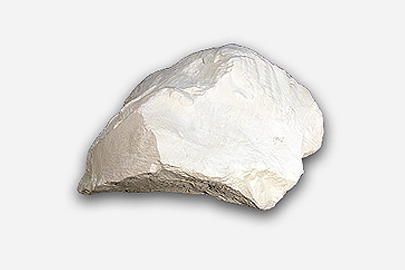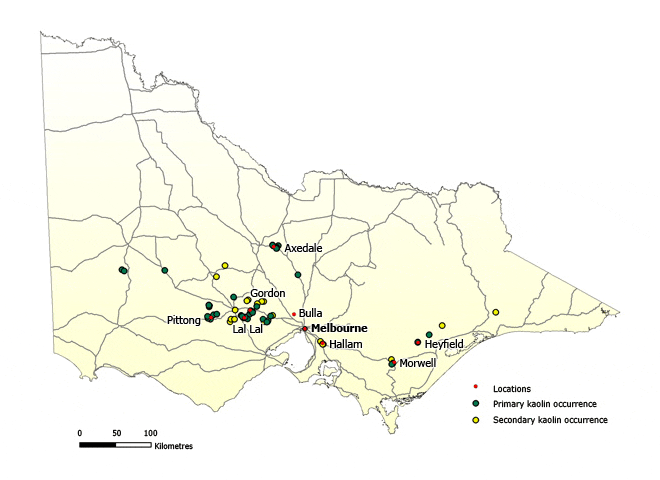Kaolin

The term kaolin is typically used for clayey material that is low in iron content and is white or nearly white and composed of minerals of the kaolin group.
The kaolin-forming clays are all hydrous aluminium silicates, essentially kaolinite [Al2(Si2O5)(OH)4], that are formed by the decomposition of other aluminous minerals, especially feldspars.
Kaolin deposits can be nearly pure kaolinite or may contain impurities that affect the characteristics of the clay.
Kaolin can be classified into two broad types:
- primary (residual) kaolin, developed in situ by the alteration of pre-existing feldspar-rich rocks
- secondary (redeposited) kaolin deposits accumulated in stream, lake and basin environments as a product of eroded residual deposits.
Kaolin has a variety of uses, with a range of grades produced to meet the requirements of particular uses. The physical and chemical characteristics of kaolin are usually related to its origin, but can be adjusted for particular end uses by beneficiation and blending. Victorian kaolin is used in paper manufacture as a filler and coating material; as a filler in paints, rubber and plastics; and in ceramics and refractory clays that can withstand high temperatures.
There are residual kaolin deposits produced by weathering of granites at Pittong (currently Victoria's largest producer), Lal Lal, Dunneworthy, Bulla, Hallam, Pakenham, and possibly the area between Glenrowan and Yarrawonga.
In deposits at Gordon, Ringwood, Mount Egerton, South Yarra and Northcote (all mined out) and Ballarat, dyke rocks have been altered to white kaolinite to depths of 200 m. As these rocks are quartz-free they produce almost pure kaolinite, but are costly to mine.
Residual deposits overlying early Palaeozoic sediments have also been worked from Creswick, Craigieburn, Campbellfield, Tally Ho, Mitcham and Keilor. These deposits have a high content of quartz, making them of little use except in the production of pale bricks.
There are high-grade transported kaolinitic clays at Axedale, Campbellfield, Hallora and Heyfield, and in the Latrobe Valley. The known Latrobe Valley deposits are at the base of the Morwell and Yallourn open-cut coal mines.
Extensive kaolin 'ball clay' from these mines has been worked for use in white ceramics. It is likely that there are other significant kaolinite resources in the Latrobe Valley sequence.
View the full list of industrial minerals
Further information
Industrial minerals and rocks of Victoria – Geological Survey of Victoria Report 102
Kaolin in the Parwan Valley – Geological Survey of Victoria Technical Record 1995/4
Explanatory notes on Bacchus Marsh and Ballan 1:50 000 geological maps – Geological Survey of Victoria Report 76
Maps
To create your own maps online and in real time, plan exploration activities by viewing land status, or download GIS data to add to your own maps, visit GeoVic.

Page last updated: 12 Jan 2023